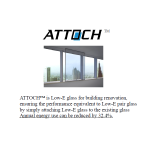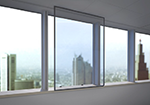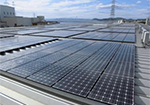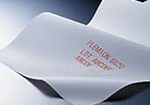AGC to Reduce by Six Times(80 million tons) Annual CO2 Emissions in 2020

AGC to Reduce by Six Times Annual CO2 Emissions in 2020 through Energy-Saving, Energy-Creating Products
Date: Jul 10, 2014
Source: Asahi Glass Co., Ltd.
Tokyo, July 10, 2014—AGC (Asahi Glass Co., Ltd.; Head Office: Tokyo; President & CEO: Kazuhiko Ishimura) announces that it will enable avoidance of as much as six times the AGC Group’s own annual CO2 emissions in 2020, through its energy-saving and energy-creating products.
The glass industry is energy intensive. Seriously acknowledging the environmental load of its own business activities, the AGC Group is working to reduce the impact on the environment through improvements to its manufacturing processes. At the same time, the Group develops, supplies, and distributes environmentally related products that contribute to energy conservation and creation to ensure that its contribution will outweigh its environmental impact.
To drive this initiative, the Group has established the following slogan.
Slogan for CO2 emissions avoided through environment-related products:
The AGC Group, through its energy-saving and energy-creating products, will enable avoidance of over six times AGC Group’s own annual CO2 emissions in 2020.
The AGC Group forecasts its own annual CO2 emissions to be about 13 million tons*1 in 2020, while the target for reducing CO2 emissions generated through its energy-saving & energy-creating products is 80 million tons*2, or six times the projected annual emissions of the Group, an amount equivalent to the annual CO2 emissions of approximately 16 million households*3, or the CO2 emissions from 30 advanced LNG thermal power stations.
AGC also aims to increase the percentage of environmentally related products, including energy-saving & energy-creating products, within total sales to 30% by 2020.
AGC will contribute to solving environment and energy issues and build a sustainable society, through R&D efforts to improve its manufacturing processes and products that can meet the needs for energy-conservation and creation.
*2: CO2 reductions if energy-saving and energy-creating products manufactured in 2020 are used to the ends of their useful lives.
*3: Annual CO2 emissions of one household: Approx. 5 tons (fiscal 2011) Source: Greenhouse Gas Inventory Office of Japan
Reference: Examples of the AGC Group’s energy-saving & energy-creating products
 Low-E double glazing
Low-E double glazing
Heat insulating & shielding effects increase air-conditioning efficiency. CO2 emissions during the product lifecycle can be reduced by about 8 to 9 times*1 ATTOCH™
ATTOCH™
ATTOCH™ is Low-E glass for building renovation, ensuring the performance equivalent to Low-E pair glass by simply attaching Low-E glass to the existing glass. Annual energy use can be reduced by 32.4%.*2 Leoflex™
Leoflex™
Leoflex™, chemically strengthened glass, successfully halved the panel weight, eliminating the need for reinforcement work & creating more installation spaces at lower costs. UV Verre Premium Cool on™
UV Verre Premium Cool on™
UV Verre Premium Cool on™ blocks both UV rays, which cause a sunburn, and IR rays, which causes skin irritation from heat, alleviating discomfort & ensuring comfort without strong air-conditioning.- Low-environmental impact refrigerants
1234yf:
The automotive refrigerant 1234yf features an extremely low environmental load and its global warming potential (GWP) is 1/1,300 that of conventional products*3.AMOLEA™:
The AMOLEATM, a refrigerant for air conditioners, has the same performance as conventional products*4, but its GWP has been lowered to 1/6.  FLEMION™
FLEMION™
Fluorinated ion-exchange membrane used for manufacturing of caustic soda. It reduces energy use by about 40% compared to conventional mercury method. FLEMION™ F-8080contributes to even lower voltage and power consumption. Tough Coore™
Tough Coore™
This ceramic material for heat-shielding road-surface coatings is very hard and durable, which dramatically improves the abrasion resistance of the road-surface coating. It also alleviates heat-island effects as road surface temperature can be lowered by about 10 degrees C.
*2: When 6 mm glass and 5 mm ATTOCH are combined; the reduction varies depending on building conditions.
*3: Compared to the automotive refrigerant 134a
*4: Compared to HFC-410A
Media Contact
Junichi Kobayashi, General Manager, Corporate Communications & Investor Relations
Asahi Glass Co., Ltd.
(Contact: Michiyo Tomiya; Tel: +81-3-3218-5603; E-mail: info-pr@agc.com)









